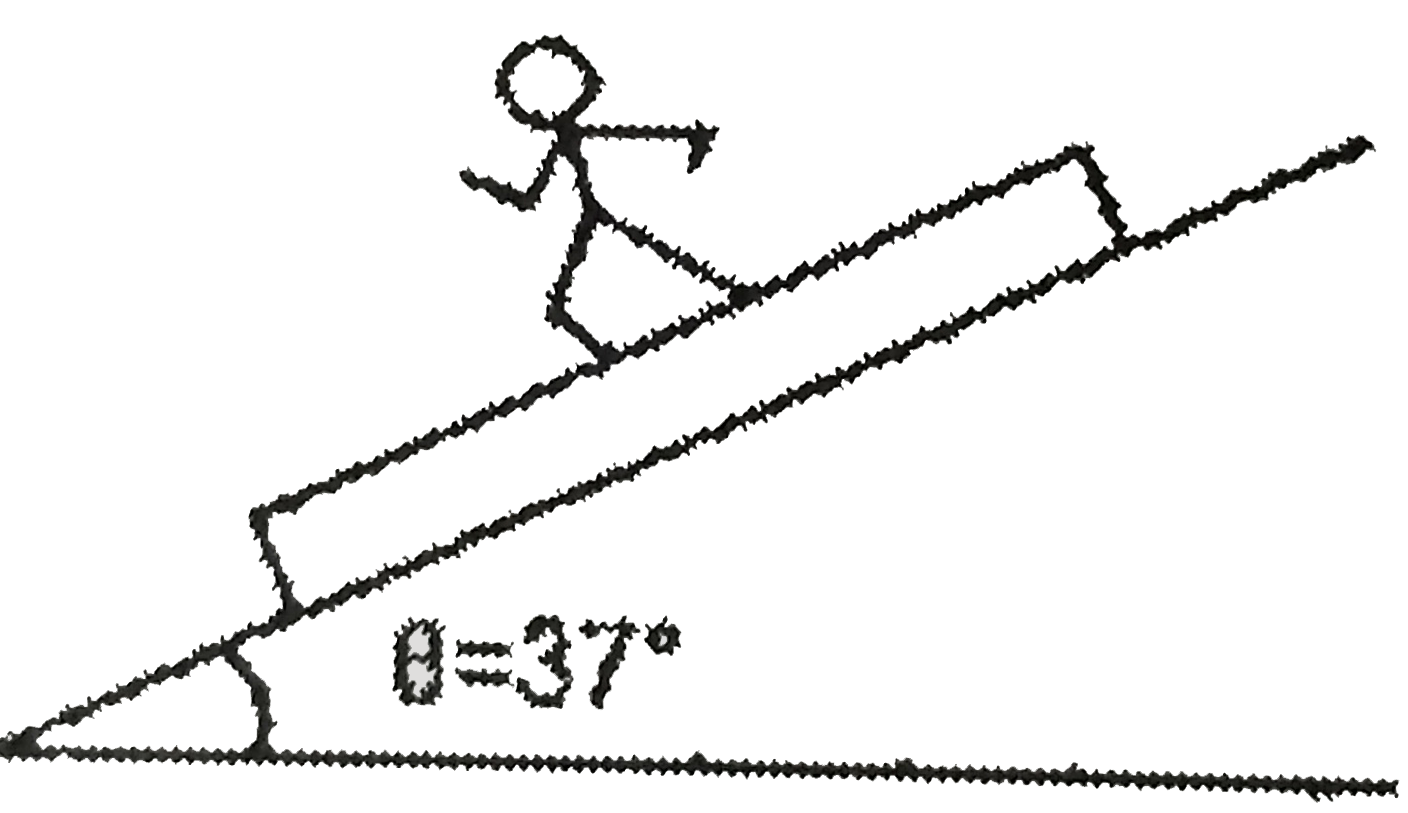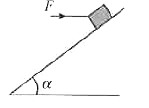A hollow sphere of mass m and radius R is rolling downdard on a rough inclined plane of inclination θ. If the coefficient of friction between the hollow sphere and incline is μ, then
Friction opposes its translation
Friction supports rotation motion
On decreasing θ, frictional force decreases
All of these
The correct Answer is:D
To solve the problem of a hollow sphere rolling down a rough inclined plane, we will analyze the forces acting on the sphere and how they relate to the motion.
1. Identify the Forces Acting on the Sphere:
- The gravitational force acting downward: Fg=mg
- The normal force acting perpendicular to the inclined plane: N=mgcos(θ)
- The frictional force acting up the incline: Ff=μN=μmgcos(θ)
2. Resolve the Gravitational Force:
- The component of gravitational force acting down the incline:
Fdown=mgsin(θ)
3. Apply Newton's Second Law:
- For translational motion down the incline:
mgsin(θ)−Ff=ma
- Substituting Ff:
mgsin(θ)−μmgcos(θ)=ma
4. Consider Rotational Motion:
- The frictional force also provides torque for the rotational motion of the sphere. The torque (τ) about the center of mass is given by:
τ=Ff⋅R=μmgcos(θ)⋅R
- The moment of inertia (I) of a hollow sphere is:
I=23mR2
- The angular acceleration (α) is related to the linear acceleration (a) by:
a=Rα
- Therefore, we can express the torque in terms of angular acceleration:
τ=Iα=23mR2⋅aR=23mRa
5. Set Up the Equations:
- From the torque equation:
μmgcos(θ)R=23mRa
- Cancel mR (assuming R≠0):
μgcos(θ)=23a
6. Solve for Acceleration:
- Rearranging gives:
a=32μgcos(θ)
Conclusion:
The acceleration of the hollow sphere rolling down the inclined plane is given by:
a=32μgcos(θ)
- The gravitational force acting downward: Fg=mg
- The normal force acting perpendicular to the inclined plane: N=mgcos(θ)
- The frictional force acting up the incline: Ff=μN=μmgcos(θ)
- The component of gravitational force acting down the incline:
Fdown=mgsin(θ)
- For translational motion down the incline:
mgsin(θ)−Ff=ma
- Substituting Ff:
mgsin(θ)−μmgcos(θ)=ma
- The frictional force also provides torque for the rotational motion of the sphere. The torque (τ) about the center of mass is given by:
τ=Ff⋅R=μmgcos(θ)⋅R
- The moment of inertia (I) of a hollow sphere is:
I=23mR2
- The angular acceleration (α) is related to the linear acceleration (a) by:
a=Rα
- Therefore, we can express the torque in terms of angular acceleration:
τ=Iα=23mR2⋅aR=23mRa
- From the torque equation:
μmgcos(θ)R=23mRa
- Cancel mR (assuming R≠0):
μgcos(θ)=23a
- Rearranging gives:
a=32μgcos(θ)
The acceleration of the hollow sphere rolling down the inclined plane is given by:
a=32μgcos(θ)
Similar Questions
The coefficient of friction between the block and the inclined plane is μ.
View SolutionA block of mass m is at rest on a rough inclined plane of angle of inclination θ. If coefficient of friction between the block and the inclined plane is μ, then the minimum value of force along the plane required to move the block on the plane is
View Solution
Knowledge Check
- Question 1 - Select One or More
A solid cylinder of mass m and radius r is rolling on a rough inclined plane of inclination θ. The coefficient of friction between the cylinder and incline is μ. Then.
Africtional force is always μmgcosθBfriction is a dissipative forceCby decreasing θ, frictional force decreasesDfrictiona opposes translation and supports rotation. - Question 2 - Select One or More
A solid cylinder is rolling down a rough inclined plane of inclination θ. Then
AThe friction force is dissipativeBThe friction force is necessarily changingCThe friction force will aid rotation but hinder translationDThe friction force is reduced if θ is reduced - Question 3 - Select One
A block of mass m is placed on a rough inclined plane of inclination θ kept on the floor of the lift. The coefficient of friction between the block and the inclined plane is μ. With what acceleration will the block slide down the inclined plane when the lift falls freely ?
AZeroBgsinθ−μgcosθCgsinθ−μgcosθDNone of these
A ball of mass M and radius R is released on a rough inclined plane of inclination θ. Friction is not sufficient to prevent slipping. The coefficient friction between the ball and the plane is μ. Find
(a). The linear acceleration of the ball down the plane.
(b). the angular acceleration of the ball about its centre of mass.View SolutionA cylinder of mass m and radius R rolls down an inclined plane of inclination θ. Calculate the linear acceleration of the axis of cylinder.
View SolutionA cylinder of mass m and radius R rolls down an inclined plane of inclination θ. Calculate the linear acceleration of the axis of cylinder.
View SolutionA plank of mass 3m is placed on a rough inclined plane and a man of mass m walks down the board. If the coefficient of friction between the board and inclined plane is μ=0.5, the minimum acceleration of does not slide is:
 View Solution
View SolutionA block of mass m in the equilib rium on a rough inclined plane with inclination α and coefficient of friction as shown in the figure (μ<tanα). A force F is applied on the block which makes an angle θ with the horizontal as shown in diagram.
 View Solution
View Solution

